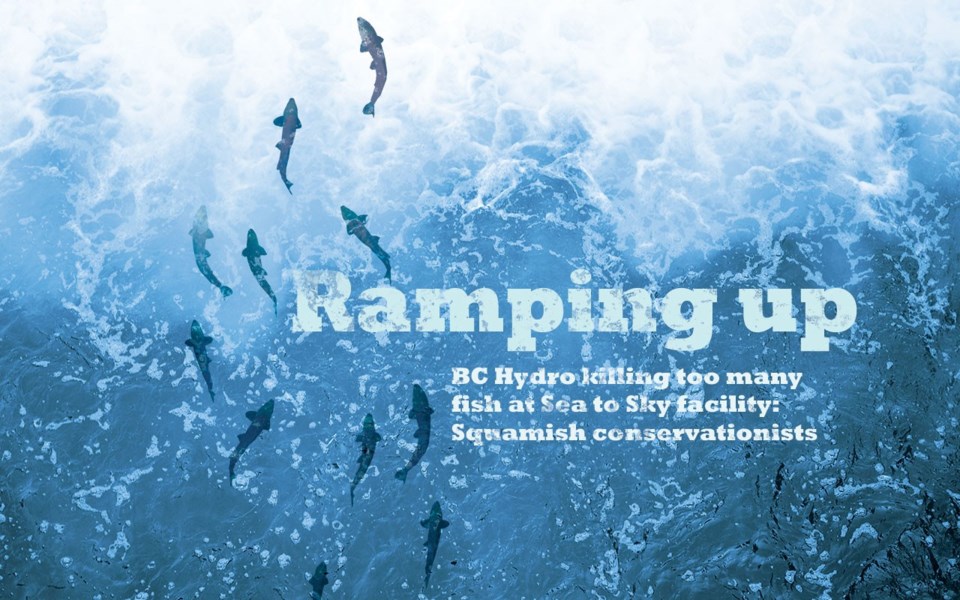
It is a complicated issue, but it comes down to this: local conservationists say BC Hydro is consistently killing more fish than it needs to.
They are also concerned less monitoring of the impact of BC Hydro's operation is being done as the utility goes through a provincial review of its operations.
This isn't the first time these issues have been raised, but the conservationists say they are getting lip service from BC Hydro and all levels of government and so are speaking out publicly, again.
One of the main problems, according to Chessy Knight, Dave Brown and Edith Tobe, local members of the Cheakamus Water Use Plan (CWUP) monitoring committee—which offers advice and feedback on the impact the hydro facility has on local fish and fish habitat—is consistent and dramatic ramping of the water at the hydroelectric facility at the Daisy Lake Dam, just north of Squamish. This ramping results in rapid water level changes in the Cheakamus River, and can also affect the Squamish River as water from the Cheakamus is discharged at the powerhouse there.
Water flows from Daisy Lake Reservoir to Shadow Lake Reservoir, where a tunnel and two penstocks carry the water 11 kilometres to the 157-megawatt Cheakamus Generating Station on the Squamish River.
The conservationists recommend BC Hydro follow a Fish-First Flow Alternative, which includes reduced ramping rates, higher in-stream flows into the Cheakamus River and curtailing hydropeaking when flows in the Squamish River are low. Hydropeaking is when plants produce more power during high demand periods, such as during the winter, or during the day, and reduce production when power is less in demand, like in the summer or overnight. During the winter, when the Daisy reservoir is low, hydropeaking can drastically change water levels in the Squamish River on a daily basis. This impacts fish in the Squamish River downstream from the powerhouse, studies and the conservationists say.
What is ramping?
"When a power plant shuts down or starts back up, the water level changes very quickly. It can either go up very fast or can go down very fast," said Knight, an environmental scientist who has written four scientific papers on the subject of ramping in the region. She is also president of the Squamish River Watershed Society. Tobe is the executive director of the society.
"When it goes down, which is the bigger concern, it strands and kills juvenile fish and they are the most sensitive life stage. That happens at any hydroelectric facility," said Knight.
"When it goes up, it can flush little juvenile fish out of where they are holding—say in a pool or on a gravel bar margin. It can affect spawning fish; it can blow out their nests."
Tobe, a biologist, describes ramping as, "The faucet is on. The faucet is off. It is as quick as that. Rather than slowly turning the faucet on, so you are not creating a huge swish, and slowly turning the faucet off."
The trio says that fish will die with any hydroelectric facility, and they accept that. Their issue is with the number of fish being killed, which they say is excessive.
"In a matter of minutes, they can drop the river 30 centimetres. They can do it so much quicker than would ever happen in nature," Knight said.
The fish can't biologically respond to the rate the water is changing.
Stranding happens in nature, but at a much lower frequency, she added.
"If you are looking at 100 per cent of the time when a Hydro facility ramps too quickly and they are going to strand fish, in nature it might happen five per cent of the time."
This has been an issue for years and likely applies to all 23 BC Hydro dam sites in the province, the conservationists say.
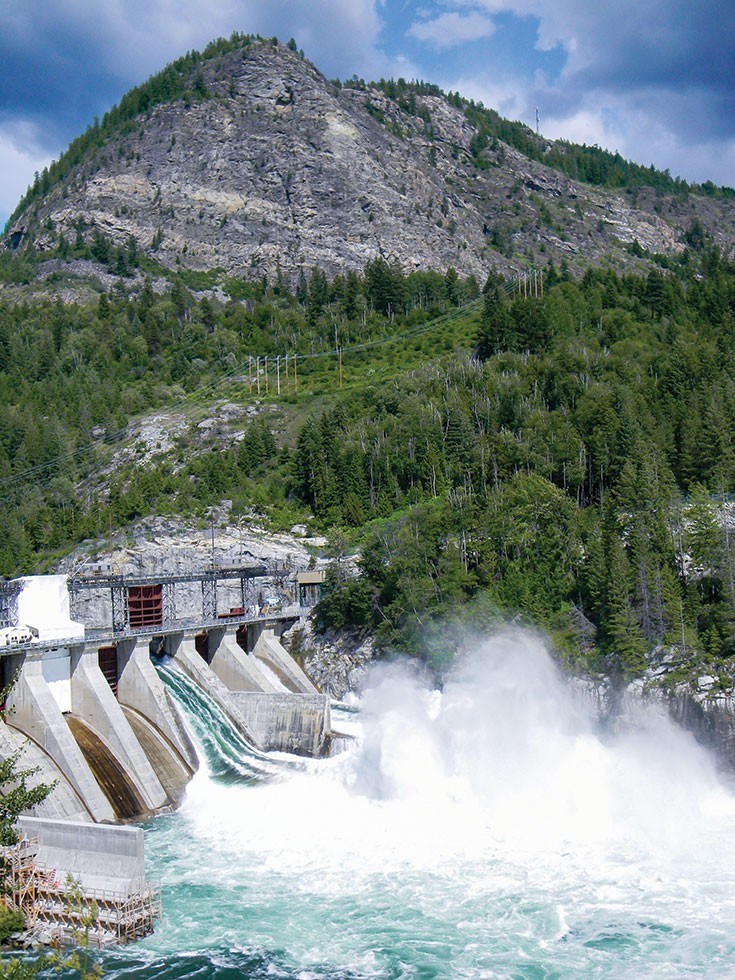
BC Hydro's own consultants have acknowledged fish have been killed.
In August of 2018, a study showed flows were decreased from 40 to 20 cubic metres per second over two hours.
This resulted in a rate of stage change of 8.1 cm an hour, which is three times higher than the Fisheries and Oceans Canada guideline rate of 2.5 cm per hour, according to the report.
"The most surprising perhaps is the large number of fish lost from what most previously considered a relatively modest ramp," reads the report to BC Hydro on Aug. 30, 2018. "We estimated that 10 per cent of the steelhead trout fry population in low angle cobble bars was lost due to the Aug. 20, 2018, ramping event."
BC Hydro's current ramping rates were established as part of its Water Use Plan, which was finalized in 2006.
Committees, such as the one the conservationists are on, are meant to inform water-use plans for hydro facilities of the public's values when it comes to issues around water and water-use facilities. Operations from the Daisy Lake facility affect aquatic life and habitats in both the Cheakamus and Squamish Rivers.
A Water Use Plan (WUP) is a technical document that, once reviewed by provincial and federal agencies and approved by the provincial Comptroller of Water Rights, defines how water control facilities will be operated, according to a BC Hydro document on the committee.
Twenty-three BC Hydro facilities are being or will be reviewed, including the Daisy Lake dam.
What the District of Squamish says
The District of Squamish is one of many stakeholders that sit on the BC Hydro Water Use Plan Monitoring Advisory Committee.
"Water ramping rates are regulated under the provincial Water Act, and they have an order under this Act specifying the maximum allowable ramping rates. The rates are maximums, and BC Hydro made commitments to monitor stranding, review the maximum rates, and adjust the operational regime accordingly," Caroline Ashekian, environmental coordinator with the District said.
"The District has regulations—within the OCP - Development Permit Area 1 Environmental Protection—in place to preserve and protect fish habitat within our jurisdiction and boundaries. Changes to river flow and fish communities upstream of our boundaries have impacts to the ecosystems downstream within our boundaries," she said.
"The District shares the concerns brought forward by the other stakeholders regarding the impacts to fish, particularly when there is opportunity to mitigate and minimize the impact,"
Squamish Mayor Karen Elliott said the District has not shared these concerns with BC Hydro directly.
"We would expect that BC Hydro is abiding by its commitments to monitor, review and adjust accordingly. We support the efforts of local conservationists who are working to affect these changes to BC Hydro's operating procedures. We have an ongoing and positive working relationship with BC Hydro and will look for an opportunity in the near future to convey our concerns more directly on this issue," she said in an email.
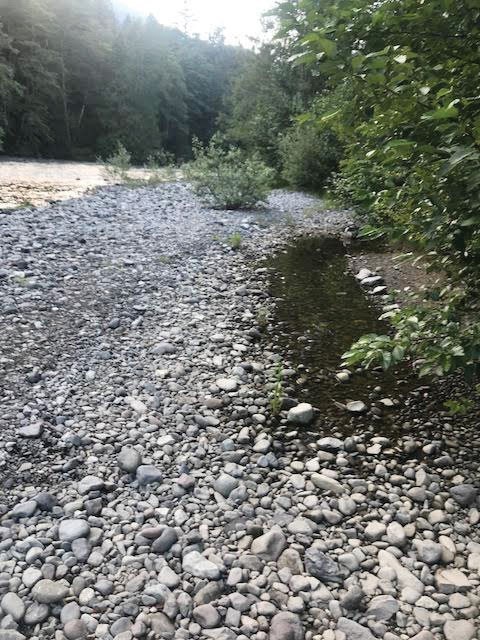
Provincial comptroller
Asked why BC Hydro isn't required to follow the Fisheries and Oceans' suggested ramping rate of 2.5 cm/hr., Ted White, the provincial director and comptroller of water rights, said the recommendation is a "generic standard."
"Different ramp rates can be ordered based on site-specific information. Ramp rates in the Water Use Plan (WUP) order were determined in consultation with federal (including Fisheries and Oceans Canada), provincial, regional, and municipal governments, the Squamish Nation, BC Hydro, environmental and recreational interests, and local stakeholders," read an emailed statement from White.
No one from the Squamish Nation was available to speak to this issue prior to press deadline due to summer holidays, a nation representative said.
Asked if there was concern about the stranding of fish, White said they were recognized and "will be reviewed as part of the Water Use Plan Order Review (WUPOR) process. An interim stranding assessment study prior to the initiation and completion of the Water Use Plan Order Review is currently under consideration."
BC Hydro says
When it comes to water management decisions, BC Hydro said the company is committed to working for user groups "to find a balance between our power generation requirements and First Nation and stakeholder concerns which include other uses of water, including fish and wildlife, recreation, heritage protection, and flood control."
Between 1999 and 2002, BC Hydro engaged with First Nations, regulators and other stakeholders in a process to develop a Water Use Plan for the Cheakamus River, with the goal of finding a better balance between BC Hydro's power generation requirements and environmental, social and economic interests.
Cheakamus was the only Water Use Plan in the province that did not achieve consensus between the interests of the different parties.
The conservationists said that consensus wasn't reached due to the disagreement over ramping levels.
BC Hydro acknowledged the concerns with ramping and stranding and said that, since last August, the company has been working with the Squamish Nation, regulators—Department of Fisheries and Oceans and the Ministry of Forest, Lands, Natural Resource Operations and Rural Development—and local user groups to further address concerns of fish stranding on the Cheakamus.
"Over the last year of testing different operations, we've identified several opportunities to further adjust our operations—including a slower, more protracted flow reduction during the month of August," the statement says.
"We anticipate that this slower flow reduction will reduce overall fish stranding, including spawning pink salmon and migrating chinook salmon."
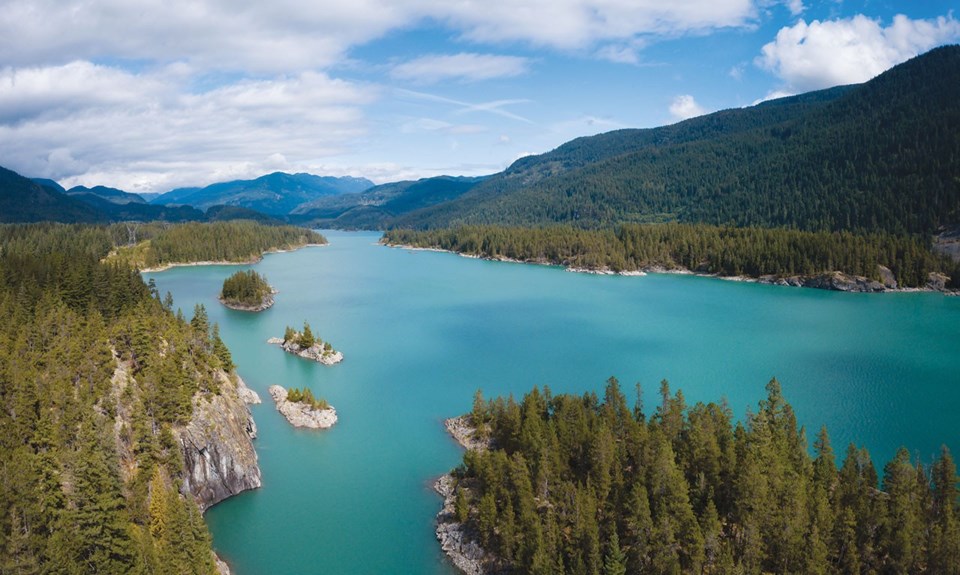
In a later email, a spokeswoman for BC Hydro reiterated, "We're currently trying a slower ramping over an extended period to determine if this can help to reduce fish stranding."
Knight said these efforts are only being done because conservationists are "squawking" and that the slower flow needs to be standard beyond just the month of August.
Economic study?
If the reason for not slowing ramping is economic, as Sea to Sky MLA Sturdy and others have suggested, an economic study of various ramping rates seems warranted, Knight said.
"If the plant is shut down, it is losing money," she said.
"As soon as you are ready to go again, you want to flip that switch ... If you can go zero to 60 in a minute or two, you are back to making full money. To do it responsibly can take 12 hours. The same thing if they need to shut down because they have some scheduled maintenance."
If an economic study has been done internally at BC Hydro, it hasn't been shared, she said.
Sturdy shares the conservationists' concerns.
"It is an economic issue, obviously," he said. "We should be looking at these things on a scientific basis. Certainly, when we look at stocks of concern around chinook and also steelhead, these are important fish in an area already under a fair bit of pressure. I would certainly like to see some evidence of what they are doing to not be stranding fish."
The onus should be on BC Hydro to show they aren't causing issues, he added, "as opposed to what it seems to be, which is the work of Dave and Chessy Knight and Edith Tobe. They are having to do the work to prove that these impacts are happening. I almost want to see that flipped on its head."
BC Hydro didn't respond to a question on whether a study had been done and, if so, what it showed.
White said the issue of an economic study was an operational question for BC Hydro.
"However, additional studies of economic implications would be required to assess the impact of different ramping rates, and could form part of the recommendations under the WUPOR," he said.
Monitoring
Another concern of the conservationists is that BC Hydro has cut back on its monitoring of fish and fish habitat in the Cheakamus and Squamish Rivers. From 2005, there were a series of monitoring studies commissioned by BC Hydro as part of their commitments under the WUP. The utility is currently down to three main monitoring programs: for steelhead, coho and chum, according to Brown, who is the chair of the Sea to Sky Fisheries Roundtable and vice-chair of the Squamish-Lillooet Sportfish Advisory Committee. As well, the CWUP committee has received no indication from BC Hydro that these three programs will continue past 2019, or through the flow order review process.
"Erring on the side of caution, you have got to keep doing the monitoring, both through the period of the flow-order review, and for the life of the facility's operations" Knight said.
Some monitoring is continuing, but not enough to make a scientifically robust dataset, Tobe added.
"We have been fighting since 2017 to make sure these programs aren't stopping," Tobe said, adding that her understanding is that insufficient monitoring will be done for three years while the facility's review is done.
"If the monitoring programs are not continued through the period of the Order Review, a substantial scientific data gap will be created in a monitoring program that already does not answer the fundamental management questions developed during the Water Use Planning process.
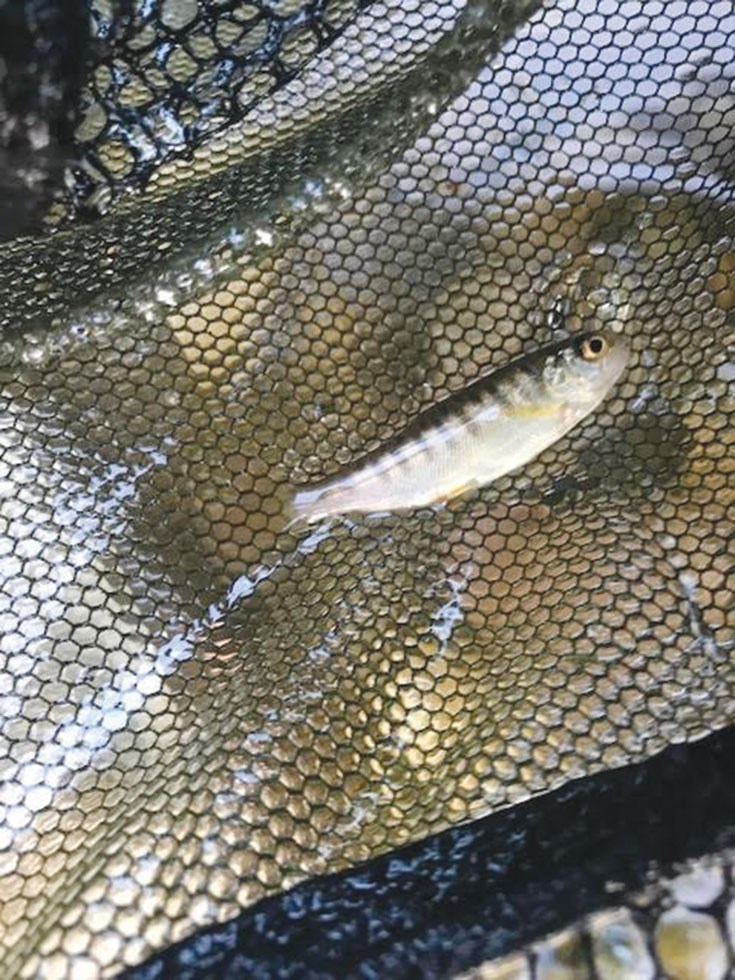
"These management questions, and the subsequent field studies to address them, were developed in order to understand the relationship between fish productivity in the Cheakamus River and operation of the Daisy Reservoir hydroelectric facility," Knight said in a letter to the province.
Provincial comptroller White said the Water Use Plan Order Review process reviews information provided by the monitoring programs, "and documents the outcomes of implementing the WUP. The outcomes are reviewed with First Nations, agency regulators and key stakeholders, and their recommendations are incorporated into the final report to the comptroller for a decision on whether and/or how to amend the WUP Order. The Cheakamus WUPOR is currently scheduled to begin December 2019 and continue through spring 2021."
White said BC Hydro has conducted 10 monitoring programs under the Cheakamus Water Use Plan since 2007.
Two of these monitoring programs were initiated in 2008 to monitor fish stranding and were completed as scheduled. The first was designed to assess stranding in the tailrace channel—the channel that carries water away from a hydroelectric plant—over a period of three years and was completed in 2011.
The second was designed to assess fish stranding below the Daisy Lake Dam for one year and was completed in 2008.
There is a program that aims to offset the damage done by BC Hydro facilities. The Fish & Wildlife Compensation Program (FWCP) is a partnership between BC Hydro, the Province of B.C., Fisheries and Oceans Canada, First Nations and public stakeholders to conserve and enhance fish and wildlife in watersheds impacted by construction of BC Hydro dams. Since 2000, the FWCP has funded 42 projects in the Cheakamus River Watershed—including 38 projects to benefit fish and four to benefit wildlife.
The conservationists say they benefit from this program, and it results in good work being done, but they argue the program doesn't come close to making up for the fish being killed.
What the Squamish-Lillooet Regional District says
As a local government federation, the regional district does not have jurisdiction over BC Hydro ramping rates, said Patricia Westerholm, communications co-ordinator for the SLRD.
The SLRD has also not received any correspondence on this issue, she said.
About Daisy Lake Reservoir and the Cheakamus River
From www.bchydro.com
The Daisy Lake Reservoir was created in 1926 when the Cheakamus Dam was built. The dam was replaced in 1984 with a 29-metre high modern earth-fill structure. Water flows from Daisy Lake Reservoir to Shadow Lake Reservoir, where a partially lined tunnel and two penstocks carry the water 11 kilometres to the 157-megawatt Cheakamus Generating Station on the Squamish River.
Normal reservoir level: Between 376.5 metres and 364.9 metres deep
Flood control: Only filled above 376.5 metres for short-term flood control.
Cheakamus River: Water levels on the Cheakamus River, a tributary of the Squamish River that first flows into Daisy Lake Reservoir and then out of it before joining the Squamish at Cheekye, are influenced by a combination of precipitation, natural inflows from tributaries, high tide conditions generated at Squamish, and the diversion of water from Daisy Lake to the generating station.
This story originally appeared under a different headline in The Squamish Chief on Aug. 7. Read the original story at squamishchief.com/news/local-news/bc-hydro-killing-too-many-fish-at-sea-to-sky-facility-squamish-conservationists-1.23908426.



